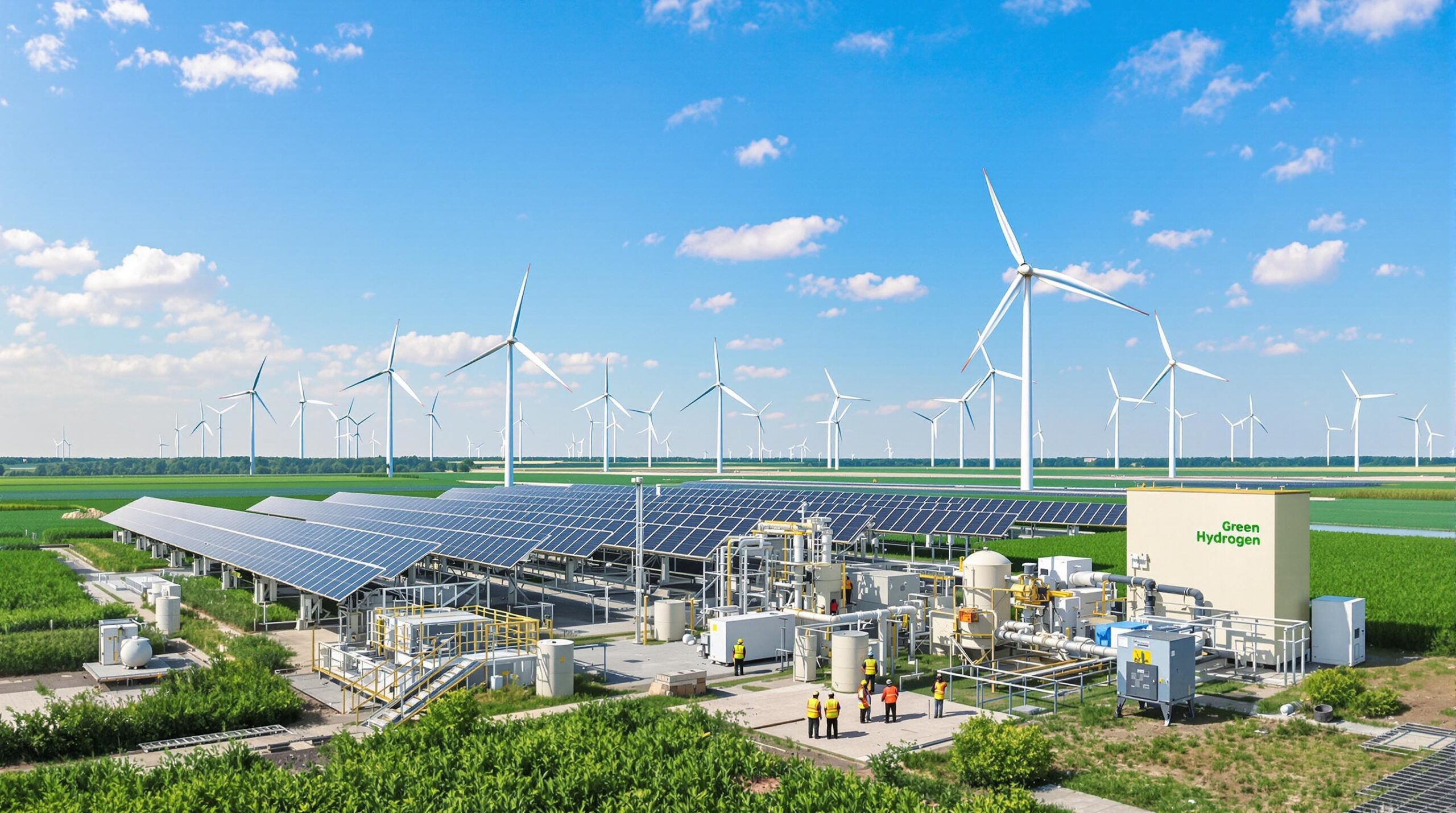Green hydrogen, produced through renewable sources, has emerged as a beacon for a cleaner and more resilient global energy ecosystem. As the world seeks alternatives to fossil fuels, industries and governments turn their attention to hydrogen initiatives. A growing number of ambitious projects are underway, signaling a turning point for the sector.
The Fundamentals of Green Hydrogen Production
Unlike grey or blue hydrogen, green hydrogen is produced through the electrolysis of water using renewable electricity. This process avoids the emission of greenhouse gases, thus greatly reducing the sector’s carbon footprint. With surplus wind and solar power often going untapped, green hydrogen offers a solution for storing excess renewable energy and balancing the grid.
Electrolyzers, the core technology behind green hydrogen, separate water into hydrogen and oxygen molecules. When powered by renewables, they provide a clean, flexible fuel suitable for many applications. As innovation drives down the costs of both renewable electricity and electrolyzers, the viability of green hydrogen continues to improve.
Global Investment and Policy Support
Governments across continents are recognizing the strategic importance of green hydrogen in achieving climate targets and energy security. Leading economies such as the European Union, Australia, Japan, and the United States have announced multi-billion-dollar investments in green hydrogen infrastructure. These commitments cover research, production facilities, storage expansions, and cross-border distribution networks.
Policy frameworks, including subsidies and mandates, are accelerating the deployment of green hydrogen. National hydrogen strategies focus on scaling up production, reducing costs, and developing domestic supply chains. As regulatory clarity increases, private firms are investing in commercial-scale projects, confident in the outlook for long-term market growth.
Major Green Hydrogen Projects Around the World
Europe’s Ambitious Expansion
The European Union has become a trailblazer in fostering large-scale green hydrogen initiatives. The “Hydrogen Backbone” project envisions a continent-spanning pipeline network to transport hydrogen efficiently. Several flagship plants are being constructed in Germany, Spain, the Netherlands, and Denmark, many with capacities exceeding 100 megawatts.
The EU aims to produce 10 million tonnes of renewable hydrogen annually by 2030. Projects such as HyDeal España and Northern Green Crane will significantly boost production. These initiatives demonstrate the region’s determination to lead the green hydrogen transition.
Australia’s Hydrogen Superpower Aspirations
Australia leverages its vast renewable potential to build some of the world’s largest green hydrogen projects. Projects like the Asian Renewable Energy Hub and the Western Green Energy Hub plan to integrate gigawatt-scale solar and wind energy production. They will produce hydrogen for export to Asia and domestic use.
Backed by government incentives and international partnerships, Australian hydrogen could eventually help meet the energy needs of Japan and South Korea. Australia’s geographic position and abundant resources provide a unique advantage in the emerging hydrogen economy.
Middle Eastern Mega-Projects
Saudi Arabia and the United Arab Emirates are investing heavily in green hydrogen as part of their economic diversification strategies. The $5 billion NEOM project plans to use solar and wind energy for one of the world’s largest hydrogen facilities. Production will support transport, industrial decarbonization, and even hydrogen exports to Europe and Asia.
These mega-projects underscore the Middle East’s commitment to securing a leading role in the global clean energy landscape. Abundant sunlight and existing energy infrastructure provide the region with strong competitive advantages.
North America’s Hydrogen Network
The United States and Canada are rapidly advancing their hydrogen strategies. The U.S. Department of Energy has invested over $8 billion in regional clean hydrogen hubs. These hubs connect renewable energy producers, manufacturers, and transportation sectors.
Canada’s projects take advantage of abundant hydroelectricity in Quebec and British Columbia. Cross-border collaborations promise to strengthen North America’s clean energy ties. These initiatives help reduce emissions from heavy industry, aviation, and long-haul freight.
Industrial and Transport Applications Expand
The versatility of green hydrogen enables it to decarbonize some of the most challenging sectors. Heavy industry, including steel, cement, and chemicals, can drastically cut emissions by switching to hydrogen-based processes. The hydrogen fuel can replace coal and natural gas as a reducing agent or power source.
Green hydrogen also powers long-haul trucks, trains, and even ships, sectors where battery solutions often struggle with weight and refueling logistics. Public transport agencies in Europe and Asia are launching hydrogen-powered buses and trains, showcasing the fuel’s utility and reliability. With further investments, aviation is also exploring hydrogen-based propulsion.
Technological Progress and Cost Competitiveness
As more projects reach commercial scale, innovation is driving down the cost of electrolyzers and renewable energy. Manufacturers are scaling up production and introducing next-generation technology that improves efficiency. Some analysts predict that by 2030, the cost of green hydrogen could fall below $2 per kilogram.
Storage and transport solutions are also evolving, with research into liquid organic hydrogen carriers and ammonia-based methods. These breakthroughs will help overcome existing challenges in delivering hydrogen from remote centers of production to demand hubs. Continued collaboration among academia, industry, and governments is vital to realizing these advances.
Obstacles and Opportunities Ahead
Despite the momentum, green hydrogen faces several barriers, including the need for stronger policy frameworks, costly infrastructure, and public acceptance. Grid upgrades, water supply issues, and storage needs require strategic solutions. Governments must work closely with industry to address these challenges and ensure equitable access to green hydrogen.
However, the growing international collaboration offers hope. Global initiatives like the Hydrogen Council foster knowledge sharing and best practices. Cross-border partnerships are helping to align technical standards, streamline regulations, and unlock global green hydrogen trade.
The Road Toward a Hydrogen-Powered Future
The acceleration of green hydrogen projects is reshaping the energy landscape. As production and infrastructure expand, costs will likely fall, stimulating new markets. Widespread adoption could create jobs, support economic resilience, and hasten the transition to a low-carbon world.
By positioning green hydrogen at the core of energy strategies, countries can drive innovation, economic growth, and a sustainable, interconnected future. As momentum increases, the sector’s impact on global energy systems continues to intensify, steering nations toward reaching their climate goals.

